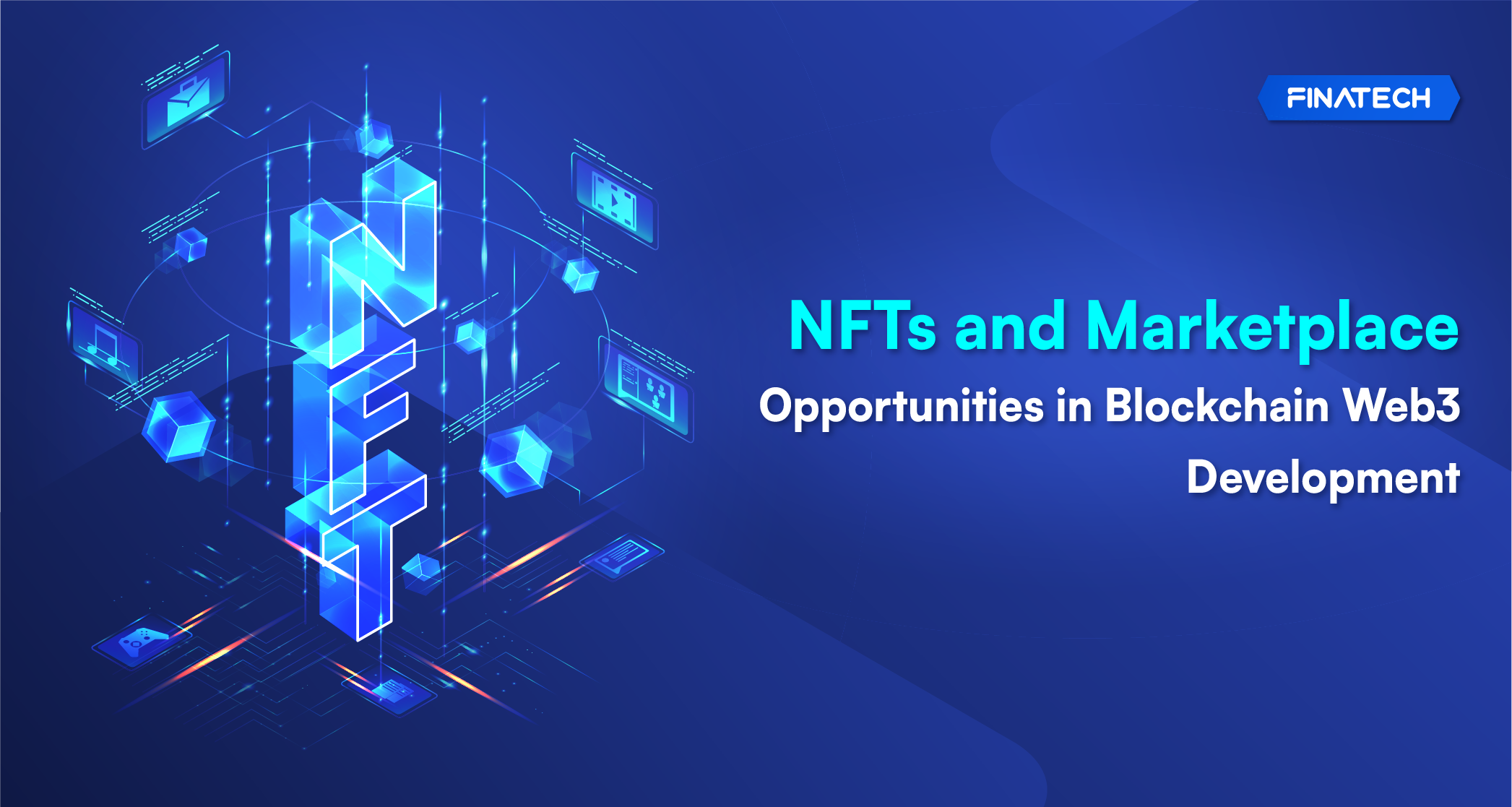NFTs & Marketplace: Opportunities in Blockchain Web3 Development
Blockchain Web3 Thursday, March 16, 2023
Blockchain Web3 Thursday, March 16, 2023

Blockchain technology has introduced a paradigm shift in the way we do business, and the potential of this technology is still being explored. The emergence of Non-Fungible Tokens (NFTs) and marketplaces is a testament to the innovation of blockchain technology.
Understanding NFTs: A New Era of Unique Digital Assets
Non-Fungible Tokens (NFTs) are unique digital assets that are stored on the blockchain. Unlike traditional cryptocurrencies that are fungible, NFTs are non-fungible, meaning each token is unique and has its own value. NFTs are used to represent digital assets such as art, music, videos, and even virtual real estate. The ownership of NFTs is stored on the blockchain, making it transparent and secure.
NFTs work by using smart contracts on the blockchain. The smart contract contains the terms and conditions of the NFT, including the ownership, transferability, and royalty payments. The smart contract ensures that the NFT is unique and cannot be duplicated, making it a valuable digital asset.
Examples of NFTs in different industries include CryptoKitties, NBA Top Shot, and Beeple's "Everydays: The First 5000 Days." These NFTs have gained popularity and have been sold for millions of dollars.
Advantages of NFTs include the ability to prove ownership, transferability, and the ability to provide royalty payments to the original creator. Disadvantages include the high transaction fees and the environmental impact of mining cryptocurrencies.
An NFT marketplace is a platform that allows users to buy, sell, and trade NFTs. NFT marketplaces work by using blockchain technology to store the ownership of the NFTs, ensuring that the transactions are secure and transparent.
There are different types of NFT marketplaces, including decentralized and centralized marketplaces. Decentralized marketplaces use blockchain technology to store the NFTs, while centralized marketplaces store the NFTs on their servers.
Examples of NFTs marketplaces include OpenSea, Rarible, and Nifty Gateway. These marketplaces have gained popularity, with millions of dollars’ worth of NFTs being traded on these platforms.
Advantages of NFTs marketplaces include the ability to reach a global audience, the ability to provide a platform for artists and creators to sell their work, and the ability to offer a secure and transparent marketplace. Disadvantages include the high transaction fees and the potential for fraud.
The potential for growth and innovation in NFTs and the marketplace is vast. NFTs and marketplaces have the potential to disrupt various industries, including art, music, gaming, and even real estate.
The growth of NFTs and marketplaces has already had an impact on the art world. Artists and creators can now sell their work directly to their fans, without the need for intermediaries. This has opened up new revenue streams for artists and has created a new market for digital art.
The gaming industry is also set to benefit from NFTs and marketplaces. NFTs can be used to represent in-game assets, such as weapons and skins, allowing players to buy, sell, and trade these assets on NFT marketplaces.
Challenges and opportunities in NFTs and the marketplace include the need for standardization and regulation. As NFTs and marketplaces continue to grow, there is a need for standardization of the terms and conditions of NFTs, as well as regulation to prevent fraud and ensure the protection of consumers.
Innovations in NFTs and marketplace include the use of NFT s as a means of crowdfunding, where investors can buy tokens that represent a share in a project or product. This can open up new opportunities for entrepreneurs and creators to raise funds and build a community around their projects.
Another innovation is the use of NFTs in virtual and augmented reality. NFTs can be used to represent virtual land or objects in virtual and augmented reality worlds, creating new opportunities for developers and investors.
In conclusion, NFTs and marketplaces are an exciting development in blockchain Web3 development. The potential for growth and innovation is vast, and the impact on various industries is already being felt. While there are challenges and opportunities in NFTs and marketplaces, the potential benefits for artists, creators, investors, and entrepreneurs are significant.
At Finatech, we are committed to helping our clients explore the potential of NFTs and marketplaces in their businesses. Our blockchain Web3 development services are designed to help our clients take advantage of the opportunities offered by this emerging technology. We believe that NFTs and marketplaces are the future of digital assets, and we are excited to be a part of this innovative movement.
Ready to explore the potential of NFTs and marketplaces in your business?
Contact Finatech today to learn how our blockchain Web3 development services can help you take advantage of this innovative technology and stay ahead of the competition.